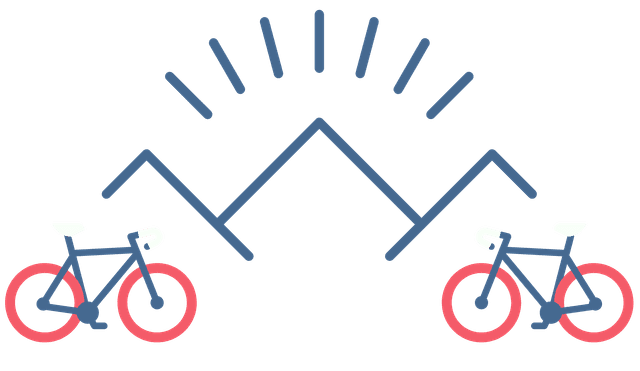Tasmania: Working Away on Two Wheels
Wed Jul 02 2025
|Conor and AlinaIt’s 6:30 am and we’re in a tiny town in the Tasmanian countryside called Gretna. We wake up in a warm bubble of sleeping bags, every bit of us carefully tucked away. Staying curled up in our little tent, wrapped in merino and down layers, sounds pretty ideal—but the truth is, we’re groggy and disgruntled at waking up at such an ungodly hour, and very aware that the urge to pee isn’t going anywhere, so we might as well face the sub-zero outside world.
As we unzip the tent, we’re met by a stiff, frozen tent fly—condensation turned to ice overnight. Our breath hangs in the air, and everything around us is coated in a silent frost. It’s freezing, but eerily beautiful. Numb fingers and toes push us into motion. Camp comes down quickly, and after a bowl of cereal and a hot cup of tea, we’re back on our bikes, pedaling out of the highlands and south toward Hobart, Tasmania’s capital.

Tasmania marked a clear departure from the rhythms we had formed in New Zealand. By now it really felt like winter and, in comparison, we were barely cycling—spending more time working than wondering. We’d even picked up some extra clothes to suit our new lifestyle as casual, unskilled labourers. The added weight and bulk meant that when we did get back on the bikes, we felt every hill and every kilometer seamed that little bit longer.
After finishing up at our first volunteering gig, we made our way to the remote valley of Lorinna. Nestled in dense native forest, Lorinna was originally a gold rush town but was resettled in the 1970s by ambitious hippies and remains a haven for off-grid, alternative living. We stayed there for two weeks with a family of four in their beautiful, self-built home. The property was dotted with tiny cabins that formed a kind of deconstructed house: the kitchen was in one building, bedrooms in another, and the bathroom elsewhere—each one connected by a thriving, productive permaculture garden.

The garden was abundant—but also demanding. That’s where we came in. Our duties included chopping wood, weeding, digging veggie patches, pruning fruit trees, cooking meals, and planting trees. The valley of Lorinna felt like a very small self-contained breakaway nation: producing most of its own food and all of its electricity, capturing rainwater, and coming together for bigger projects and shared community interests. It was both rugged and inspiring.
After two formative weeks in Lorinna, we packed up again and headed to the even more remote region of Jackey’s Marsh. A chance encounter with the somewhat mystical Mira had landed us a gig house sitting and looking after horses while she and her partner Krishna took some time away from their property.
Their home was like something out of a post-apocalyptic eco-manual—in the best way. Mira and Krishna had built an Earthship—an off-grid, sustainable house made from natural and recycled materials like earth-packed tyres, glass bottles, and cans. Designed to manage energy, water, and waste independently, it was a clever, low-impact way to live with the land.
We were left to enjoy the quiet wilderness: just us, the wallabies, pademelons, wombats, leeches, hawks, kookaburras, possums, and two rather smart horses—Chief and Sánchez. It was peaceful, simple, and an opportunity to rest between Workaways.

At this point, without fully realising it, we’d spent the better part of six weeks in Tasmania—but only three or four days on the bikes. With time running out, we decided to head south toward Hobart and our final Workaway on the Nicholls Rivulet Peninsula.
We had a few options for the route: take the wild and wet west coast, the drier and more populated east, or head straight through the middle—across the Central Highlands and highland lakes. Pressed for time, we chose the direct central route. It came with more elevation and colder temps, but was by far the fastest option available to us.
Day one kicked off with 68 km and 1,330 m of climbing. Our legs held up better than expected—it was our minds that faltered. After reaching the highest point, we convinced ourselves that it would be smooth sailing from there. Classic mistake. The final 20 km were flat and scenic, but felt endless. We crawled into the village of Miena cold and exhausted, grateful to check into a room for the night. It dropped to -7°C, and we had no regrets about choosing a heated bedroom over our tent.

The following day, despite a rocky start and a broken pannier hook (quickly mended with zip ties) we hit our first 100 km mark of the trip, helped along by a generous downhill stretch. We arrived in Gretna, a tiny town about 65 km north of Hobart. We had hoped to stay in the local hotel, but we discovered that (at least for tonight) it was more of a local watering hole, and plenty of bogans were crammed into the bar for a country music concert; we were clearly the outsiders. There were no rooms available, but they kindly offered us a patch on their lawn/carpark to pitch our tent. After a suspect pizza and a few beers, we left the locals to it. Then we quietly snuck away to our tent for the night.
The next morning, we packed up early and made our way to Hobart, where we’d booked a discounted Airbnb to recover for a few days. While there, we rested, explored the city a little, and visited MONA (The Museum of Old and New Art)—which lived up to its reputation.

Our final Tasmanian Workaway was with Clare and Gareth, who had bought a beautiful olive grove about twelve years ago and now produce their own olive oil. We arrived just in time for the annual harvest and got to be part of the full process: picking, pressing, and of course, tasting. The result? A vibrant, peppery green oil packed with flavour.
We immediately felt welcome in their family home and quickly became fond of their giant, gentle Great Dane Daisy, as well as their two homeschooled kids (aged 7 and 10), who amazed us daily with their knowledge of woodworking, blacksmithing, and general trivia. In exchange for a few extra days of help, Clare and Gareth kindly gave us a lift back up north to Devonport, where we would catch the return ferry to the mainland.

Tasmania was special—more than we expected. We knew it would be beautiful, but we didn’t anticipate connecting so deeply with the people and projects we encountered along the way.
In just under two months, we learned more than we could have imagined: from natural building to permaculture, olive harvesting to off-grid living. We left feeling inspired, full of stories, and with a clearer sense of what might come after this trip.
Thank you, Tasmania.



